Smart home technology is an increasingly popular way for tenants and condominium owners to manage their lighting, sound, security, and climate of their residences from their smartphones or other devices.
A common misperception held by some multifamily developers and operators is that smart home technology appeals only to residents of upscale properties in the urban core, according to Donald Davidoff, an apartment industry consultant with D2 Demand Solutions.
“The appeal is obvious to those developing properties for the less price-sensitive and traditionally tech-hungry demographics,” he said. But he argues that the efficiencies the technology brings can have a much broader appeal—to residents of workforce housing, for example.
Many multifamily developers and operators believe that residents of workforce housing cannot afford the rent increases associated with offering a technology package. “But saving $25 in energy costs on a $900 rental may have more financial impact for residents of workforce housing than saving $50 on a $2,200 rent would have for urban professionals,” said Davidoff.
SMART TECHNOLOGY—IT’S NOT JUST FOR THE YOUNG
Another common misconception among multifamily developers and operators is that smart technology appeals only to affluent millennials and Gen-Zers, said Davidoff. He cited a Pew Research report showing that grandparents are adopting mobile-driven experiences more quickly than they did with previous technologies.
With Americans still facing Covid-related restrictions on their movement, smart systems in multifamily housing offer yet another advantage to property owners: the ability to permit short-term controlled access to potential renters or condominium buyers for self-guided tours.
Thanks to keyless entry, the property manager or sales agent can grant access to a prospect without having to be accompanied. For the foreseeable future, the ability to offer a self-show option could be a sales and marketing differentiator for multifamily communities.
Let’s take a look at nine smart multifamily connectivity systems.
BOINGO – ‘ENGINEERED FOR THE 5G ERA’
Boingo serves more than 300,000 residents nationwide. Its high-speed internet service, engineered for the 5G era, supports a wide range of smart home applications: building and unit access control, energy savings, smart lighting, leak detection, and water submetering. Boingo offers flexible and customizable Wi-Fi and IoT models to support each community’s unique smart home agenda.
Boingo manages the property’s Wi-Fi connectivity end to end. This takes the guesswork out of powering the many connected devices that can populate a multifamily complex, such as smart thermostats, connected door locks, and gaming devices, whether they’re located in residential units, the pool, the fitness center, or the dog park. Boingo designs, builds, and operates networks 24/7/365 and provides individual customer support, property support, and network monitoring.
Boingo puts property owners and managers in control of their Wi-Fi and smart home offerings, while also giving them access to real-time usage insights and analytics. For residents, Boingo provides secure, instant-on, communitywide Wi-Fi coverage immediately on move-in.
BRILLIANT – ‘PREMIUM VALUE, AFFORDABLE PRICE’
Brilliant Smart Home System helps developers and property managers offer a premium built-in smart apartment experience at an affordable price. Brilliant control panels make it easy for residents to control lighting, thermostats, cameras, locks, music, shades, and visitor access via the touchscreen or built-in voice control.
Brilliant control panels also have motion sensors to automatically turn lights on and off when tenants enter or leave a room. A built-in camera with privacy shutter allows occupiers to check in on the apartment or communicate with people at home while they’re outside the home. Brilliant’s smart dimmer switches enable smart lighting throughout a residential unit.
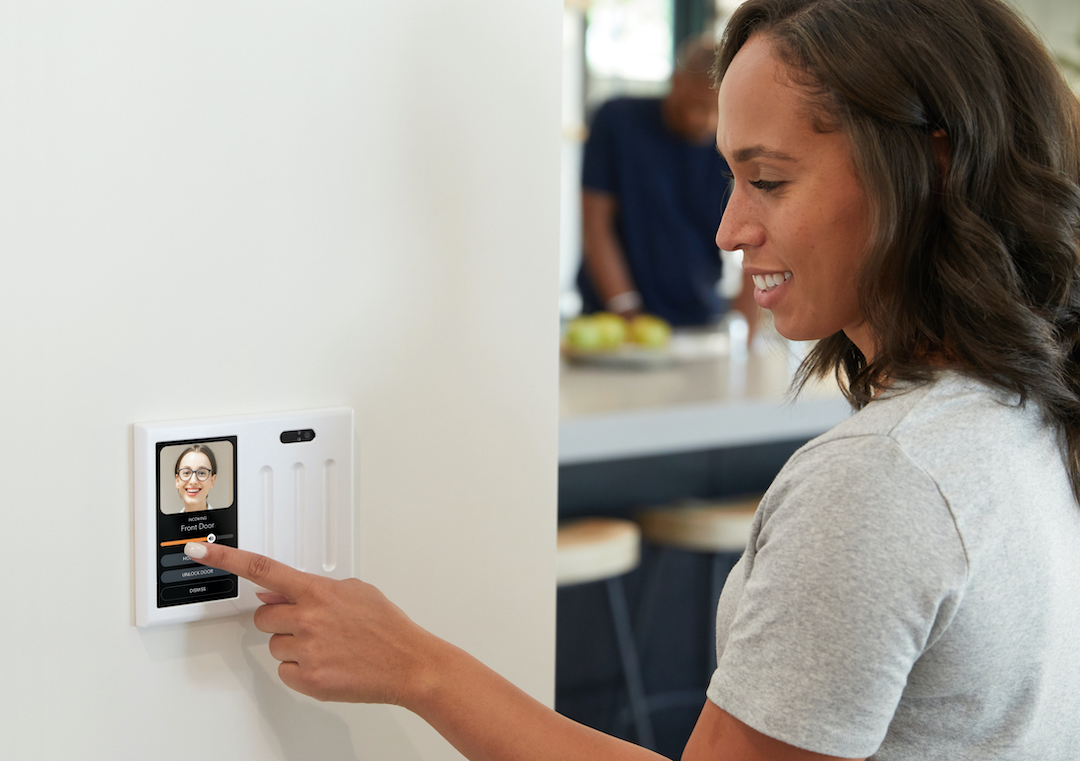
Photo: Brilliant Smart Home System
Brilliant works with Amazon Alexa, Google Assistant, Apple HomeKit and Siri, Honeywell Home, Ring, Sonos, ButterflyMX, Salto, Schlage, and Entrata.
Brilliant Command Center software helps property managers reduce energy and operational costs and streamline security via its robust access control system.
CARSON LIVING – THE ‘24/7 REMOTE DOORMAN’
Carson Living bills itself as “the one-app resident experience and 24/7 remote doorman service.” It has been used in residential high-rises in New York City in place of a live doorman.
Carson Living has partnered with other technology companies to enhance its app. Among its partners are:
- 2N, which provides a 2N IP Verso audiovisual touchscreen video intercom for the front door
- Brivo, which integrates the electronic door lock systems and access control technology for doors and elevators
- Eagle Eye Networks, which supplies the cloud video management system for the multifamily community’s surveillance cameras
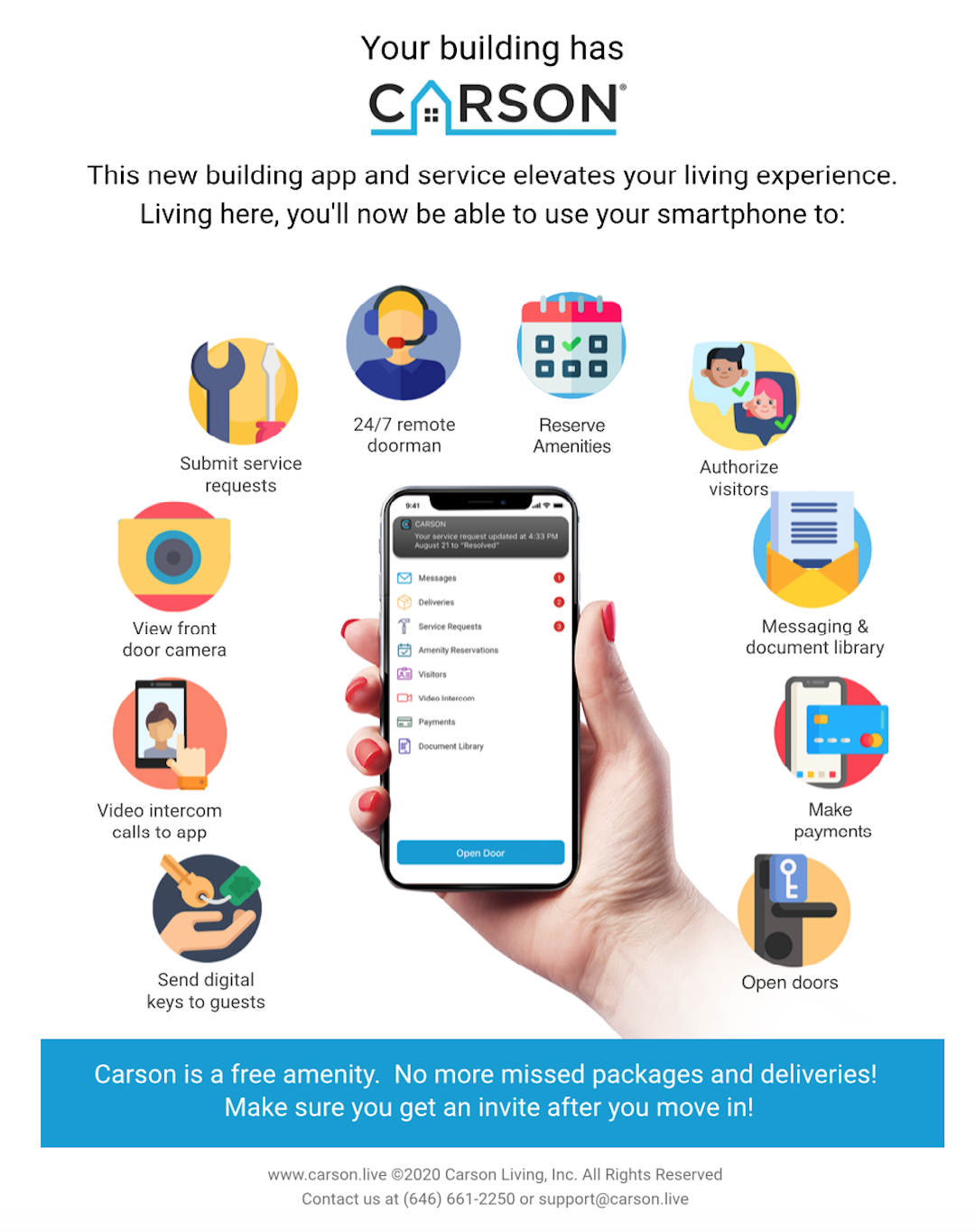
Image: Carson Living
Residents log into a single app on their smartphones to screen visitors at the door, submit a service request to the owner, direct the elevator to pick them up, pay their rent, unlock the bicycle storage, receive package notifications from the 24-hour remote doorman, and unlock the package room to pick up a delivery.
COMMUNITYCONNECT – ‘SMART WI-FI, MADE FOR DENSITY’
CommunityConnect by RealPage is enables intelligent buildings, smart access, and purpose-built smart Wi-Fi designed for density. Its Sustainability Suite provides water, energy, and waste management throughout a multifamily setting.
RealPage recently acquired WhiteSky Communications to provide managed communications services, enabling multifamily and student housing communities to provide managed bulk Internet, video, voice-over-internet protocol (VOIP) phone, and Wi-Fi services as CommunityConnect Smart Wi-Fi. Residents at CommunityConnect Smart Wi-Fi properties typically pay less for high-speed, secure, communitywide Internet that can be set up in minutes.
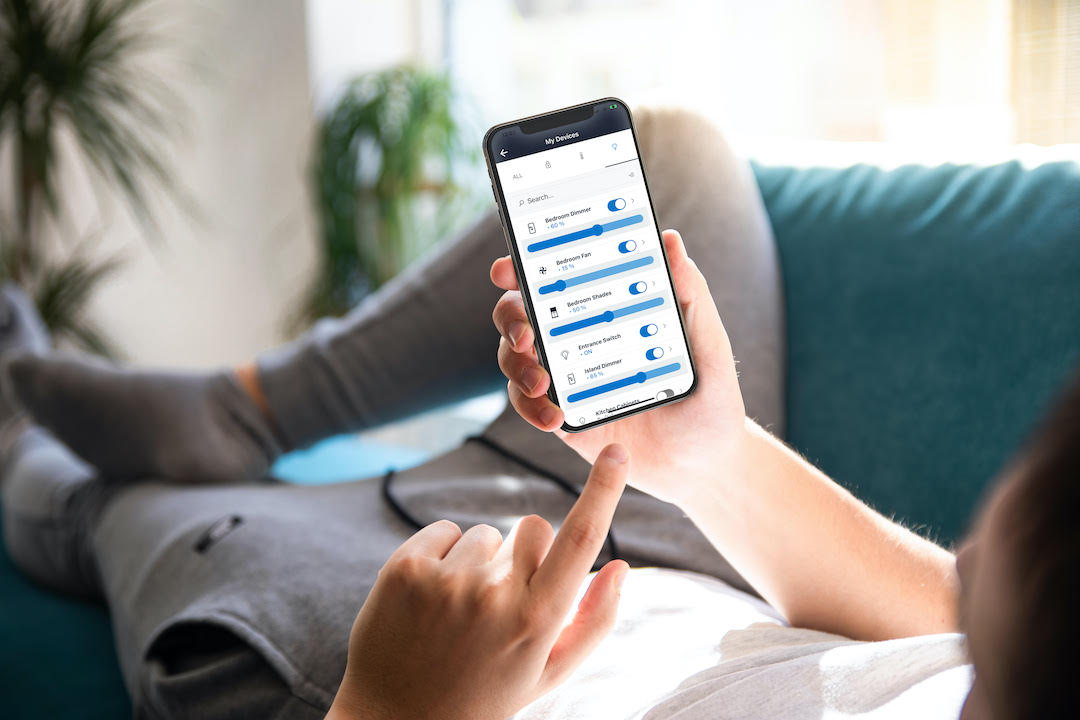
Photo: CommunityConnect by Real Page
RealPage CommunityConnect was initially developed by STRATIS IoT and enhanced with the acquisition of Chirp, for single-source, mobile-credentialed “Sidewalk to Sofa Smart Access” for building entry, amenities, elevators, garages, and storage. The system allows access control access for staff, maintenance, visitors, guests, and residents, and can enable self-tours and short-term rentals.
The CommunityConnect Smart Apartments system provides water, energy, and waste management via CommunityConnect Sustain. For property managers, CommunityConnect enables both Google Nest and Amazon Alexa Fleet Management.
DWELO – ‘PURPOSE-BUILT GATEWAY, CERTIFIED BY Z-WAVE’
Dwelo integrates its Smart Device Management platform with Nest, Kwikset, GE, and other property management systems. Dwelo is neither a smart device manufacturer nor a property management software provider; it is a purpose-built gateway that is certified by Z-Wave (an Internet of Things protocol), has Wi-Fi and Bluetooth capabilities, and can be integrated with Yardi, Google, RealPage, and Amazon. According to the company, Dwelo is being used by more than 80 multifamily ownership groups in the country to reduce operating costs and increase operating income in their multifamily properties.

Photo: Dwelo
LATCH – A ‘VERTICALLY INTEGRATED SOLUTION’
Latch uses a vertically integrated hardware/software solution for door access in apartment buildings to allow managers and renters to manage who has access—visitors, maintenance staff, deliveries, etc.
Its recently launched LatchOS enables occupiers to integrate the app with other devices, such as Sonos speakers, Honeywell and ecobee thermostats, and Jaso and Leviton light switches, all from their Latch app.
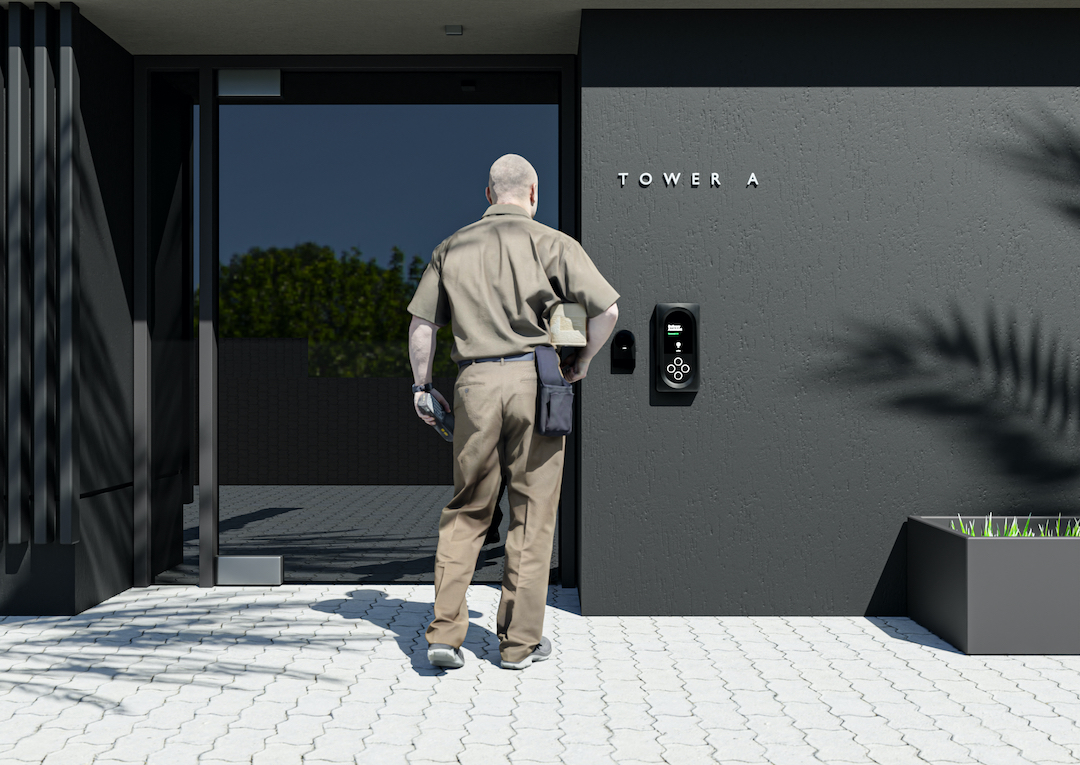
Photo: Latch
Latch sells the hardware to building owners and then charges the owner a monthly software fee, making the service free to renters or condo owners. With LatchOS, the company can build out integrations to earn revenue from residents who choose to upgrade to new features or purchase services through the platform.
POINTCENTRAL – AN ‘ALL-IN-ONE PLATFORM’
PointCentral, a subsidiary of Alarm.com, provides property automation that delivers an all-in-one platform for multifamily communities to streamline operational efficiencies, improve building health and wellness awareness, and deliver a cutting-edge amenity for residents.
The solution helps owners and operators streamline access control, guest entry, and in-unit smart home functionality on a single device, all while integrating with existing property management software.
PointCentral’s Connected Retro, coupled with a new integration with ButterflyMX, gives property managers more choice in smart intercom solutions controlled through the PointCentral mobile app. Connected Retro can upgrade an existing telephone-based intercom system into a connected intercom without adding or replacing hardware.
Residents can create scheduled smart keys for guests and delivery personnel and delete the keys at any time directly from the PointCentral app.
Because PointCentral is based on cellular technology, it can be readily transitioned to an automation solution for retrofit properties.
SMARTRENT – ‘REMOTE MANAGEMENT VIA SMART DEVICES’
SmartRent equips smart apartments and condominiums with a hub, lock, thermostat, and leak sensors. The system can also control smart lighting and plugs, shades, garage door controllers, doorbells, video intercoms, and sensors that detect motion and unintentional openings.
The app provides residents with remote management of their devices and apartment settings. When the tenant moves out, site staff can transfer the unit from occupied to vacant, triggering a succession of automated actions through Smart Rent’s software: removing access codes from locks, creating work orders for turn requests, adjusting the temperature, and switching off lights.
SmartRent also offers voice-enabled features and the ability to connect a personal voice-assistant device.
XFINITY COMMUNITIES – ‘INTERNET + ENTERTAINMENT’
Xfinity Communities provides Internet and entertainment services to residents of multifamily properties. Residents can manage their individual living units on their phones via Xfinity’s Smart Communities platform. Tenants can control their lights and climate control without having to use physical switches, thermostats, or touchpads. Smart locks reduce the risk of occupiers losing access to their units and may obviate re-keying costs for the property manager.
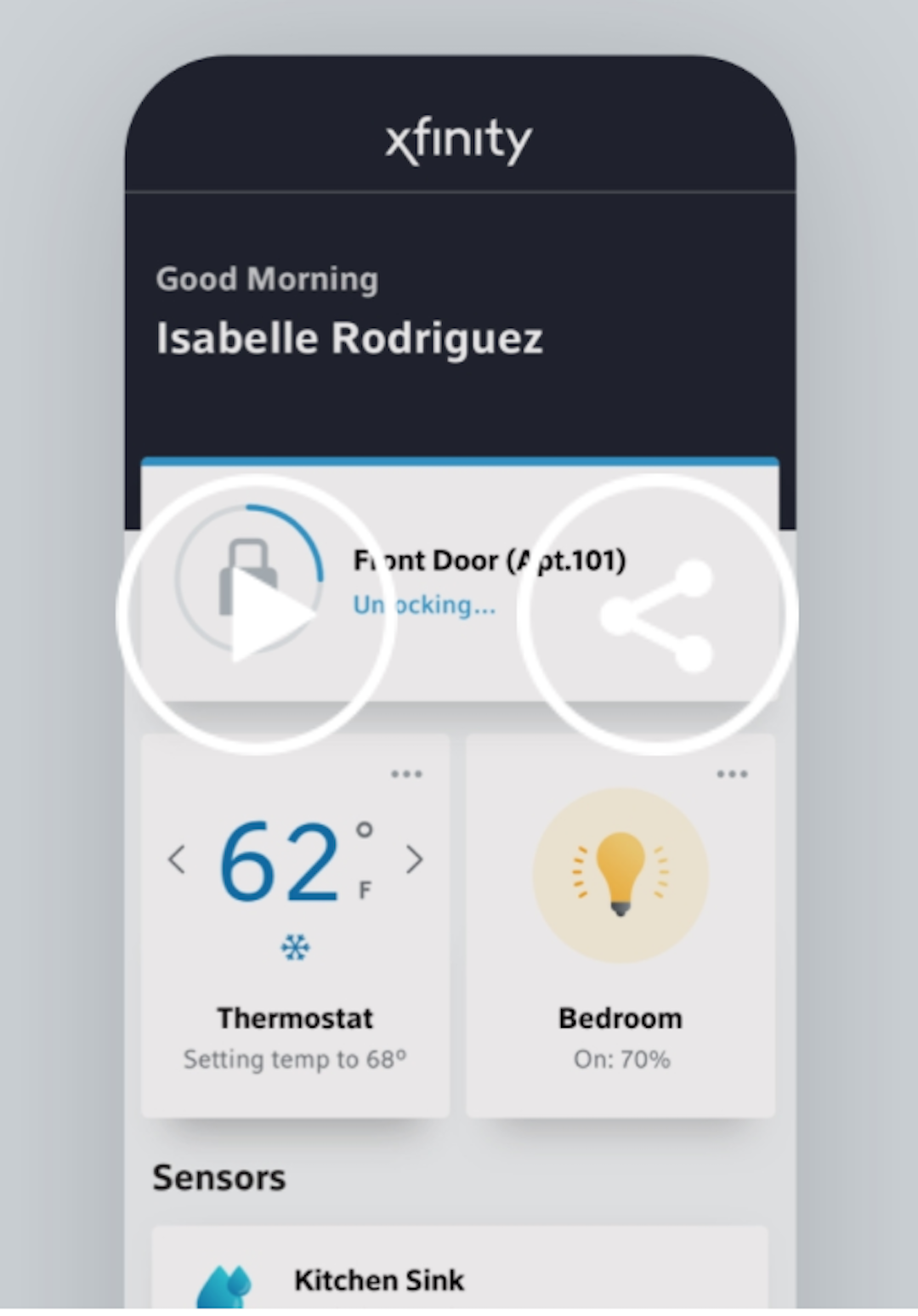
Photo: Xfinity Communities
The centralized platform can manage vacant units and common areas and monitor energy consumption in individual residences. Xfinity Communities’ smart device for water-leak detectors can help avoid catastrophic damage from flooding incidents. Maintenance and support of the technology lies primarily with property management, using the Xfinity Communities’ Smart Community Portal.
Related Stories
Multifamily Housing | Mar 14, 2023
Multifamily housing rent rates remain flat in February 2023
Multifamily housing asking rents remained the same for a second straight month in February 2023, at a national average rate of $1,702, according to the new National Multifamily Report from Yardi Matrix. As the economy continues to adjust in the post-pandemic period, year-over-year growth continued its ongoing decline.
Student Housing | Mar 13, 2023
University of Oklahoma, Missouri S&T add storm-safe spaces in student housing buildings for tornado protection
More universities are incorporating reinforced rooms in student housing designs to provide an extra layer of protection for students. Storm shelters have been included in recent KWK Architects-designed university projects in the Great Plains where there is a high incidence of tornadoes. Projects include Headington and Dunham Residential Colleges at the University of Oklahoma and the University Commons residential complex at Missouri S&T.
Mixed-Use | Mar 11, 2023
Austin mixed-use development will provide two million sf of office, retail, and residential space
In Austin, Texas, the seven-building East Riverside Gateway complex will provide a mixed-use community next to the city’s planned Blue Line light rail, which will connect the Austin Bergstrom International Airport with downtown Austin. Planned and designed by Steinberg Hart, the development will include over 2 million sf of office, retail, and residential space, as well as amenities, such as a large park, that are intended to draw tech workers and young families.
Multifamily Housing | Mar 7, 2023
Multifamily housing development in Chicago takes design inspiration from patchwork and quilting
HUB 32, a 65-unit multifamily housing development, will provide affordable housing and community amenities in Chicago’s Garfield Park neighborhood. Brooks + Scarpa’s recently unveiled design takes inspiration from the American tradition of patchwork and quilting.
Adaptive Reuse | Mar 5, 2023
Pittsburgh offers funds for office-to-residential conversions
The City of Pittsburgh’s redevelopment agency is accepting applications for funding from developers on projects to convert office buildings into affordable housing. The city’s goals are to improve downtown vitality, make better use of underutilized and vacant commercial office space, and alleviate a housing shortage.
Student Housing | Mar 5, 2023
Calif. governor Gavin Newsom seeks to reform environmental law used to block student housing
California Gov. Gavin Newsom wants to reform a landmark state environmental law that he says was weaponized by wealthy homeowners to block badly needed housing for students at the University of California, Berkeley.
Green Renovation | Mar 5, 2023
Dept. of Energy offers $22 million for energy efficiency and building electrification upgrades
The Buildings Upgrade Prize (Buildings UP) sponsored by the U.S. Department of Energy is offering more than $22 million in cash prizes and technical assistance to teams across America. Prize recipients will be selected based on their ideas to accelerate widespread, equitable energy efficiency and building electrification upgrades.
AEC Innovators | Mar 3, 2023
Meet BD+C's 2023 AEC Innovators
More than ever, AEC firms and their suppliers are wedding innovation with corporate responsibility. How they are addressing climate change usually gets the headlines. But as the following articles in our AEC Innovators package chronicle, companies are attempting to make an impact as well on the integrity of their supply chains, the reduction of construction waste, and answering calls for more affordable housing and homeless shelters. As often as not, these companies are partnering with municipalities and nonprofit interest groups to help guide their production.
Modular Building | Mar 3, 2023
Pallet Shelter is fighting homelessness, one person and modular pod at a time
Everett, Wash.-based Pallet Inc. helped the City of Burlington, Vt., turn a municipal parking lot into an emergency shelter community, complete with 30 modular “sleeping cabins” for the homeless.
Multifamily Housing | Mar 1, 2023
Multifamily construction startup Cassette takes a different approach to modular building
Prefabricated modular design and construction have made notable inroads into such sectors as industrial, residential, hospitality and, more recently, office and healthcare. But Dafna Kaplan thinks that what’s held back the modular building industry from even greater market penetration has been suppliers’ insistence that they do everything: design, manufacture, logistics, land prep, assembly, even onsite construction. Kaplan is CEO and Founder of Cassette, a Los Angeles-based modular building startup.

















